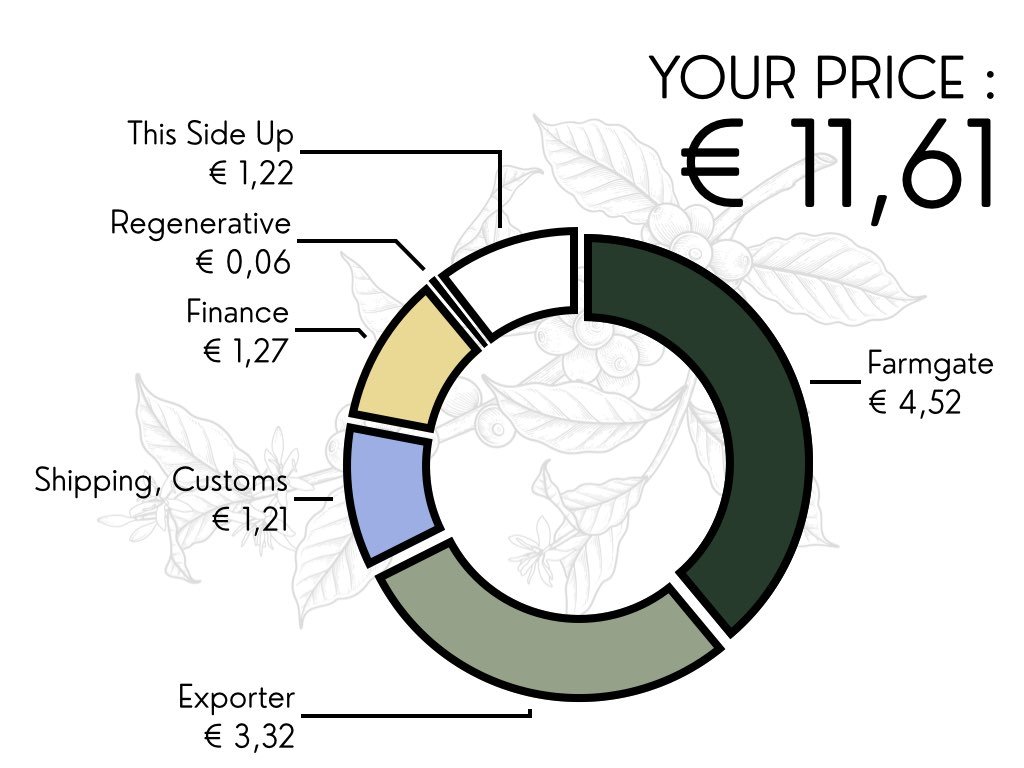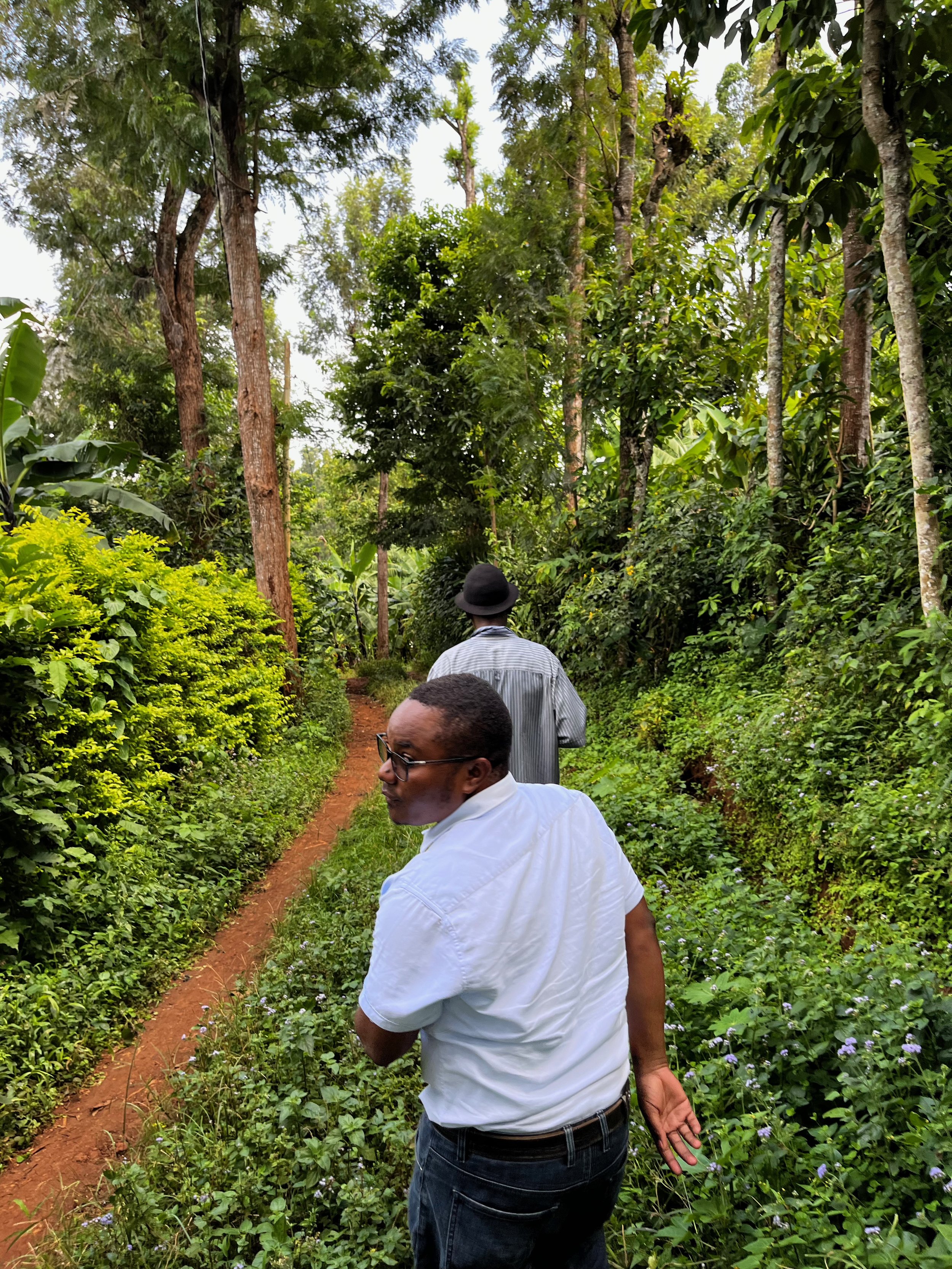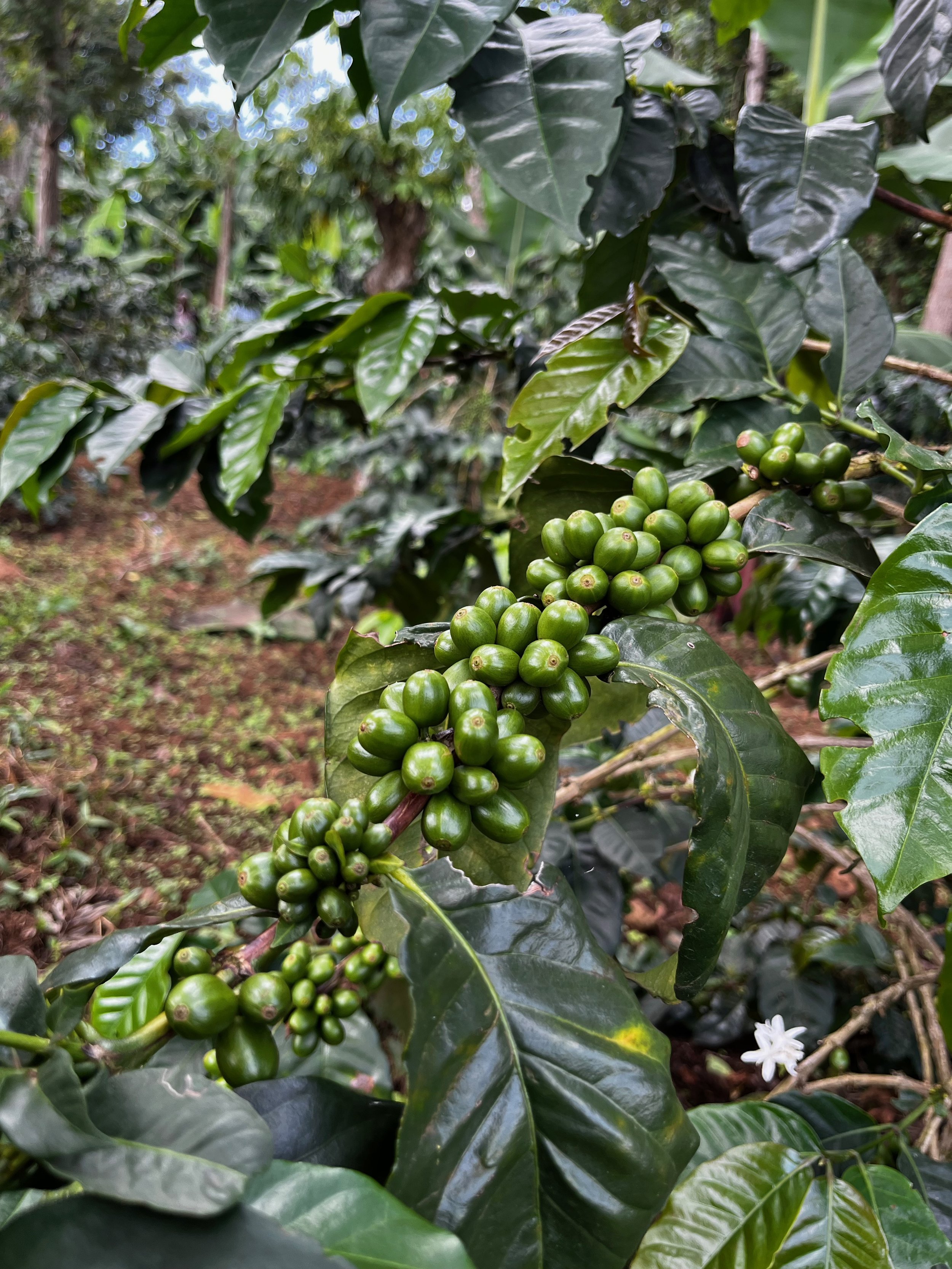change is a bean away
Wanza's connection to the Marangu group is rather close one. While Rebecca's mom and sister are part of the group, Frank's father is from the same village as them. Rebecca's mother wanted to help the group find a good buyer. Although she didn't know about the dynamics in the Tanzanian coffee industry, there were also other difficulties such as a non transparent leadership, lack of quality and marketing for the coffee from this group.
Frank felt that him getting involved would prove to be beneficial to the group. His passion to support the people of his roots and his expertise in quality/marketing as well as his experience in the coffee board accelerated this process. They decided to work only with a few members of the group instead of all of them. It was those who were interested to put effort into following the rules for producing high quality speciality coffee. The coffee from the Marangu farmers were separated and sent along with the Aranga coffee. During this time, the vision and idea for Wanza was also being birthed by Rebecca and Frank.
One of the important issues faced by farmers currently is climate change, evidently reducing production as well drasticallly in the last two years. This is currently being combatted in cooperation with seedlings developed by coffee research institute in Tanzania by rehabilitating the farms. They intend to centralize the coffee processing as well so they can consciosuly create uniform quality. They have steadily gained support from Wanza through training, marketing, quality control in the last few years and as that continues, they dream of bringing together indvidual farmers for a common mission!
CULTIVARS
Arabica Bourbon (Jackson, Mbirizi) and Kent
elevation
1,400 - 1,500 meters above sea level
NOTABLE
First year in 2024, they have tried to create 3 separate lots based on quality for This Side Up network in cooperation with Wanza coffees. TACRI distributed more than 60000 seedlings to farmers for rehabilitating the old farms in an attempt to increase productivity. Average age of the marangu farmers is 50+ years and they don’t have a lot of youth participation yet actively in the group although some of have expressed interest to join.
PROCESSING
Double wet fermentation: Cherries are depulped using simple hand-pulpers and strictly washed the same day they are picked. They are then double wet-fermented (2x 18 hours), shade dried, and then sun dried on raised beds.
TASTIFY™ CUPPING NOTES
2025 HARVEST
-
The price you pay for Marangu coffee p/kg. We agreed on this price directly with the farmers, disregarding the volatile US Coffee C price.
-
Here the farm gate is what the farmer gets for delivering the cherries to the Central Processing Unit owned by the Marangu group. This sum is inclusive of what the farmer and group gets for delivering parchment to Wanza, the exporter.
-
Wanza is responsible for a number of activities between the coffee at origin to Rotterdam. This fee per kg includes their salaries, farmer training and development fee, Business expenses that include travelling to visit the farmers, local taxes, Warehousing, dry milling and Sampling as well shipping to the nearest port for export
Other coffees in this portfolio for which the exporter fees are as follows :
Wanza – Marangu coop lot – washed grade 1 : € 3,35
-
International shipping from Dar es Salaam to Rotterdam, Netherlands. It is inclusive of freight, customs, insurance and warehousing costs.
-
Average financing cost owed to (mostly social) lenders. This ensures immediate payment to the farmers when the coffee leaves the farm or port.It also includes storage, risk fee, storage and profit
-
A standard TSU premium on all coffees designated exclusively to accelerate farmers’ own regenerative agriculture project
-
This Side Up compensation for spending time and resources importing this coffee. Our work includes year-round contact with producers, managing export, shipping, import, warehousing, grading, sampling, finding and keeping roasting partners for Marangu. € 1,22 is This Side Up’s Model 1 markup. For a full overview of our modular margin construction, see the Trade Models page.
It is worth noting that coffees have a different price since we are trying out different grades for the first time this season. And even though the farmers were paid the same farm gate for the all grades, in reality the differences can be taken from the TSU margin.
CONTACT WANZA
Wanza can be reached by email or by phone. Rebecca or Frank are also happy to have visitors to show around their coffee farms and host in their village, close to the city of Arusha and to numerous national parks
TEL +1 (615) 200 9209 / +255 713 838 181
EMAIL mlayff@gmail.com/ wanzacoffee@gmail.com
Photo gallery
You may use these images freely to promote Marangu’s coffee amongst your customers.






































